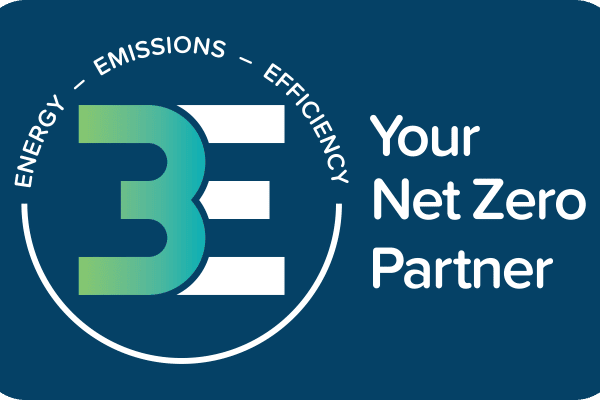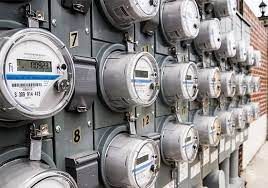Australian public hospitals account for 7% of the country’s total carbon footprint and contribute to its GHG emissions. This is due to their need to impose strict infection protocols, have uninterrupted water and electrical supply for patient care, and conform to government regulations. Thus, energy efficiency project ideas present hospitals with opportunities to reduce their energy consumption and overall carbon footprint.
However, before hospital administrators can implement energy efficiency ideas in hospitals, they need to formulate strategies because there are no one-size-fits-all solutions, especially for the healthcare sector. They have different requirements which should be aligned with critical patient care.
Energy efficiency project ideas for hospitals
- Undertake an Energy Assessment or Detailed Feasibility Study
- Upgrade Hospital Equipment
- Upgrade and Optimise Building Management Systems (BMS)
- Install on-site Solar PV System & Battery Storage
- Leverage EPCs or other performance-based project delivery models
- Ecosave and the Health Sector
Energy efficiency project ideas for hospitals
Here are some examples of energy efficiency project ideas for hospitals to save money and decrease carbon emissions.
1) Undertake an Energy Assessment or Detailed Feasibility Study
An effective way of maximising every dollar spent on hospital operations and patient care is to invest in smart energy efficiency measures to reduce energy and maintenance costs. Yet understanding baseline energy consumption and identifying specific energy-saving opportunities is an important first step in the sustainability journey. This can be achieved through commissioning qualified experts to undertake a comprehensive energy audit or detailed study of your facilities from an engineering and energy efficiency perspective.
A key outcome of a detailed energy assessment is a projection of cost estimates and return on investment of implementing certain energy efficiency ideas in hospitals. These studies are essential because it helps hospital operators develop a strategy, develop a business case for implementing energy efficiency ideas in hospitals. This is because hospitals will never be able to prioritise budget for energy efficiency – the budget for energy efficiency has to be additional – come from somewhere else like a treasury of an Energy as a Service delivery model.
A comprehensive energy assessment, audit or study typically includes analysis of the following:
- Overall energy usage by area
- Breakdown of energy consumption by source and end-use (e.g. General power, HVAC systems, Lighting, Domestic Hot Water, Gas etc)
- Building envelope, ventilation, airflow based on climate and environment
- Engineering assessment of central plant and building services equipment
- Energy efficiency ideas and opportunities
- Cost estimates and return on investment projections
As an example, Ecosave was commissioned by the Queensland Department of Health to undertake several energy audits across the state of Queensland. The analysis not only included energy efficiency ideas in hospitals that were assessed but also a portfolio-wide feasibility study with guidance on the estimated costs to implement the energy efficiency opportunities across all local health districts.
2) Upgrade Hospital Equipment
Most healthcare facilities replace their equipment once they reach the end of their lifecycles. However, it may be economically feasible to upgrade certain medical equipment when packaged together with a range of energy efficiency ideas in a single project, using future avoided costs and combined return on investment projections to justify the energy efficiency project. Upgrading equipment can be cost-effective in the long run, as they cost less to operate and maintain and are more effective in treating patients.
For example, newer medical machines, such as CT and MRI scanners, require less energy to operate. They are also lighter and emit minimal radiation, which reduces the amount of shielding required when in operation. They also have standby functions that turn them off when not in use.
Upgrading hospital equipment is not just limited to medical machines. HVAC systems, boilers, chillers, lighting, white good appliances, domestic hot water, laundry and even the PA equipment may also need updating. The smarter the equipment, the less energy it needs to operate.
Unlike the end of life replacements, upgrades that deliver Energy Efficiency outcomes provide tangible cost savings and a Return on Investment (ROI). Therefore energy efficiency upgrades provide an opportunity to upgrade old equipment that causes maintenance and operational issues using the energy savings to pay for the upgrade and improving facility performance.
A detailed energy and engineering assessment of your facilities can help identify specific opportunities.
3) Implement Smart Building Automation & Controls Technologies
Smart buildings are characterised by the use of wholly integrated systems, that share vital information. They use Internet of Things (IoT) devices—sensors, software, online connectivity—to monitor various building characteristics, analyse the data, and generate insights around usage patterns and trends that can be used to optimise the building’s environment and operations.
Smart buildings are also a critical component regarding energy usage and sustainability of hospital facilities. Having a ‘smart building’ or hospital is desirable because it could increase energy savings more than a standard building management system (BMS).
A BMS provides automation of the HVAC control, lighting control, power management, metering etc, and can play a major role in determining the operational energy efficiency of a building.
While a BMS gives you greater control over your building, smart building technology is much more than just advanced “command and control” mechanisms. As an example, a typical BMS can be programmed to turn on and off the building’s HVAC system at specific times daily based on predefined temperature levels. However, smart building technology goes one step further gives you more control over how you operate your HVAC.
For instance, it can direct your BMS to turn the HVAC on and off as needed throughout the day, by also measuring CO2 levels in real time using IoT enabled sensors. If CO2 levels are in line with hospital guidelines, the system automatically reduces the outside air intake. If CO2 levels are approaching the limit, it brings in additional outside air. This would drive down operating costs as the HVAC system would be optimised for energy efficiency.
A key step in transitioning to a smart building is to invest in a scalable and open-source protocol BMS. Some BMS platforms are proprietary closed systems which makes it difficult to integrate or optimise non-propietary controls, IoT sensors and meters. An open-protocol BMS has the flexibility to integrate a wider range of smart technologies and IoT enabled devices. This is essential to ensure you future-proof your smart building technology infrastructure so you can benefit from emerging technologies from a broader ecosystem of products.
Yet before you even do that, it is recommended you talk to the Smart Building experts at Ecosave – to review your current setup and design a scalable future-proofed platform compatible with all types of smart building technologies appropriate for your specific hospital.
4) Install on-site Solar PV System & Battery Storage
Hospitals can benefit from on-site solar PV and energy storage systems because of their size and 24/7 operation. Facility managers can choose to have them installed on the health facility’s rooftop or as a parking lot’s solar canopy. Solar canopies provide shade and shelter for parked vehicles against the harsh elements. Hospitals typically have large surface-area rooftops and parking lot facilities which may be suitable for Solar PV systems.
Large-scale solar battery storage arrays can also be paired with these solar panels to expand their capacity to harvest energy when the PV system is not generating electricity in off peaks. However, certain factors must also be considered when installing a solar PV system: structural integrity of the roof to support the weight of the proposed system design and layout, weather patterns, orientation and positioning of the panels to minimise solar shading from nearby structures or seasonal changes to the sun’s trajectory etc.
Consulting a specialist Solar PV designer helps identify if this project is feasible for the hospital’s site.
5) Leverage EPCs or other performance-based project delivery models
Energy Performance Contracting or EPC is a form of performance-based contracting designed to deliver cost-effective energy projects with minimal costs and risks to the government.
They are different from traditional contracting because they focus on performance and delivering savings, instead of low cost and low-quality solutions. As such, EPCs are optimised to deliver maximum energy savings compared to traditional price-driven tenders. EPCs also overcome barriers that affect projects related to energy efficiency, by enabling the energy savings to be utilised to pay for the project.
A critical factor the underpins the success of an EPC model is that the EPC supplier, typically an Energy Services Company (ESCO), will shoulder all the project’s risks and guarantee the savings. With EPCs, savings are maximised and risks are effectively mitigated.
The Nepean Blue Mountains Local Health District (NBMLHD) is an example of a Local Health District that is leveraging the EPC delivery model to achieve its sustainability objectives and ensure project outcomes are guaranteed. Ecosave was selected to design and implement energy efficiency upgrades over a multi-phase EPC program.
The first phase of the EPC program includes a $7.9 million project that is estimated to yield a 14.8% Return on Investment, with $1.16 million in annual energy savings. Once completed, the project is expected to reduce greenhouse gas emissions by 5,442 tonnes (CO2-e) and reduce grid electricity usage by more than 5.87 GWh.
This is a landmark project which will set the benchmark for energy savings in the health sector, providing a framework for emissions reduction that can be rolled out across NSW’s Health Facilities.“
Ecosave and the Health Sector
Energy efficiency is a long-term investment and hospitals need to initiate long term energy efficiency initiatives to be truly sustainable. At Ecosave, we are passionate about Imagineering a sustainable future in the healthcare sector. Ecosave has helped dozens of healthcare providers identify energy cost-saving opportunities and implement energy efficiency ideas in hospitals and healthcare facilities across Australia.
For expert assistance with energy audits/ detailed feasibility studies and delivering end-to-end energy efficiency solutions in your facilities, including access to government and other funding solutions, please don’t hesitate to contact our team of experienced engineers and sustainability professionals. . Leave us a message or call us direct at 1300 55 77 64.





